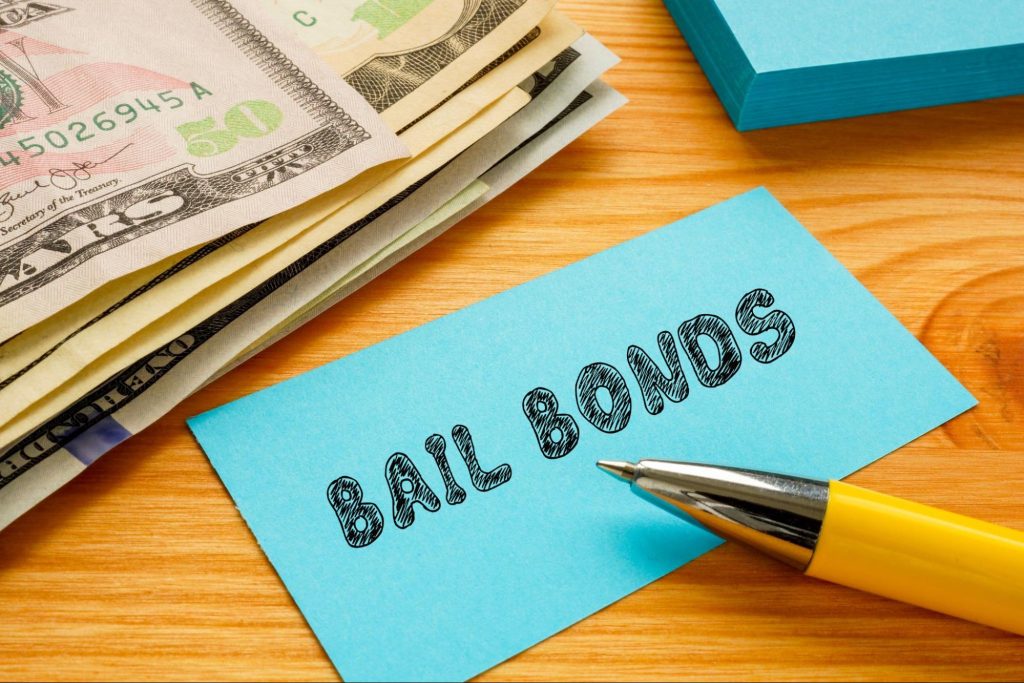The Advantages of Using a Neighborhood Bail Bondsman in Your Case
The Advantages of Using a Neighborhood Bail Bondsman in Your Case
Blog Article
Comprehending the Basics of Bail Bonds: What You Need to Know
Browsing the intricacies of bail bonds is a vital facet of the legal system that can substantially affect the charged's journey via court proceedings. A bail bond offers as a financial guarantee for the court, helping with momentary release from custody while waiting for test. Nevertheless, the complexities of how bail bonds run, the different types available, and the crucial considerations in selecting a respectable bail bondsmansman can be intimidating. Understanding these elements is essential, as the effects of mistakes might lead to unexpected problems that expand much beyond the courtroom. What are the basic elements that one must comprehend to efficiently maneuver this procedure?
What Is Bail?
Bail is a monetary setup that allows a private charged of a criminal offense to be launched from safekeeping while waiting for test. The primary function of bail is to ensure that the accused shows up for future court proceedings (Bail Bondsman). Commonly set by a court, the bail amount varies depending upon the nature of the criminal activity, the defendant's criminal history, flight threat, and various other relevant aspects
When bail is provided, the accused or an agent should pay a specified amount, which may remain in money or via a bail bond. In some situations, bail can be rejected entirely, particularly for significant offenses or if the suspicious poses a considerable danger to public safety. The idea of bail is rooted in the anticipation of virtue, enhancing the concept that people need to not be penalized prior to a sentence.

Understanding Bail Bonds
A bail bond is a financial instrument that facilitates the release of an accused person from guardianship, serving as a guarantee for their appearance at future court dates. This setup permits offenders to keep their flexibility while awaiting trial, reducing the burdens related to imprisonment. The bail bond procedure normally includes a third-party business, referred to as a bail bondsman, that gives the essential funds to the court on part of the implicated.
Bail bonds can be found in numerous types, including surety bonds, property bonds, and cash money bonds, each with unique requirements and implications. Guaranty bonds, the most usual kind, call for an exceptional repayment, typically a percentage of the complete bail quantity, which is non-refundable. On the other hand, a residential property bond includes using realty as collateral, while cash money bonds require the full bail amount to be paid ahead of time.
Comprehending the subtleties of bail bonds is crucial for offenders and their households. It is vital to realize the prospective economic ramifications, consisting of responsibilities and costs to the bail bondsmansman, along with the legal duties tied to making certain court appearances. Knowledge of these components aids in making notified decisions during a tough time.
Exactly How Bail Bonds Work
The process of protecting a bail bond commonly involves a number of crucial actions that ensure the accused can regain their flexibility while waiting for test. The specific or their depictive contacts a bond bondsman, that assesses the case and the associated threats. The bail bondsman will certainly call for details concerning the charged, consisting of the costs, the bail quantity established by the court, and any type of appropriate personal details.
When the bail bondsman concurs to supply the bond, the charged or their rep needs to pay a non-refundable charge, normally a percent of the overall bail amount. This fee compensates the bail bondsman for tackling the economic danger of making sure the implicated appears in court. In many cases, collateral might additionally be needed, such as residential property or useful possessions, which functions as security for the bond.
After any security and the charge are organized, the bondsman sends the required paperwork to the court. Upon authorization, the bail is posted, and the charged is released from custodianship. It is important for the charged to abide by all court dates and problems, as failure to do so can lead to the loss of the bond and prospective legal repercussions.
Kinds Of Bail Bonds
Various kinds of bail bonds are available to fit different conditions and requirements. The most typical type is the guaranty bond, click this site where a bondsman warranties repayment of the complete bail quantity to the court for a non-refundable cost, usually around 10% of the bail. This plan permits accuseds to safeguard their release without paying the whole bail upfront.
An additional kind is the cash bond, which needs the accused or a co-signer to pay the full bail amount in cash directly to the court - Bail Bonds. This option is typically favored for lower bail quantities, as it ensures the cash is returned upon the offender's look in all court process
Residential or commercial property bonds involve resource using property as security. In this instance, the court positions a lien on the residential or commercial property, which can be surrendered if the defendant fails to show up.
Last but not least, government bail bonds are especially developed for federal instances, usually involving higher amounts and added complexities. Recognizing these numerous bail bond kinds is critical for accuseds and their family members in making educated choices during a difficult time.
Picking a Bondsman
When picking a bondsman, it is necessary to consider numerous key elements that can impact the general experience and result. Review the bail bondsman's reputation by investigating online reviews and acquiring suggestions from relied on sources. A trustworthy bail bondsmansman will certainly have a background of professionalism and reliability and effective cases.

It is also important to comprehend the cost structure. Many bail bondsmensman charge a non-refundable charge, normally around 10% of the bail quantity. Be skeptical of any concealed charges or unusual repayment practices. Openness in pricing is a trademark of a reliable bondsman.
Verdict
Bail serves as a monetary guarantee of court appearance, while numerous kinds of bail bonds cater to various circumstances. Comprehending the operational devices of bail bonds and picking a reliable bail bondsman can significantly affect the general experience.
The intricacies of just how bail bonds operate, the various types offered, and the essential considerations in picking a trusted bail bondsman can be intimidating. The bail bond process usually entails a third-party firm, recognized as a bail bondsman, who gives the required funds to the court on behalf of the accused.
The most common type is the guaranty bond, where a bond bondsman guarantees repayment of the full bail quantity to the court in exchange for a non-refundable charge, typically around 10% of the bail. Bail offers as an economic guarantee of court look, while different types of bail bonds provide to different conditions. Comprehending the functional systems of bail check it out bonds and picking a trustworthy bail bondsman can dramatically influence the total experience.
Report this page